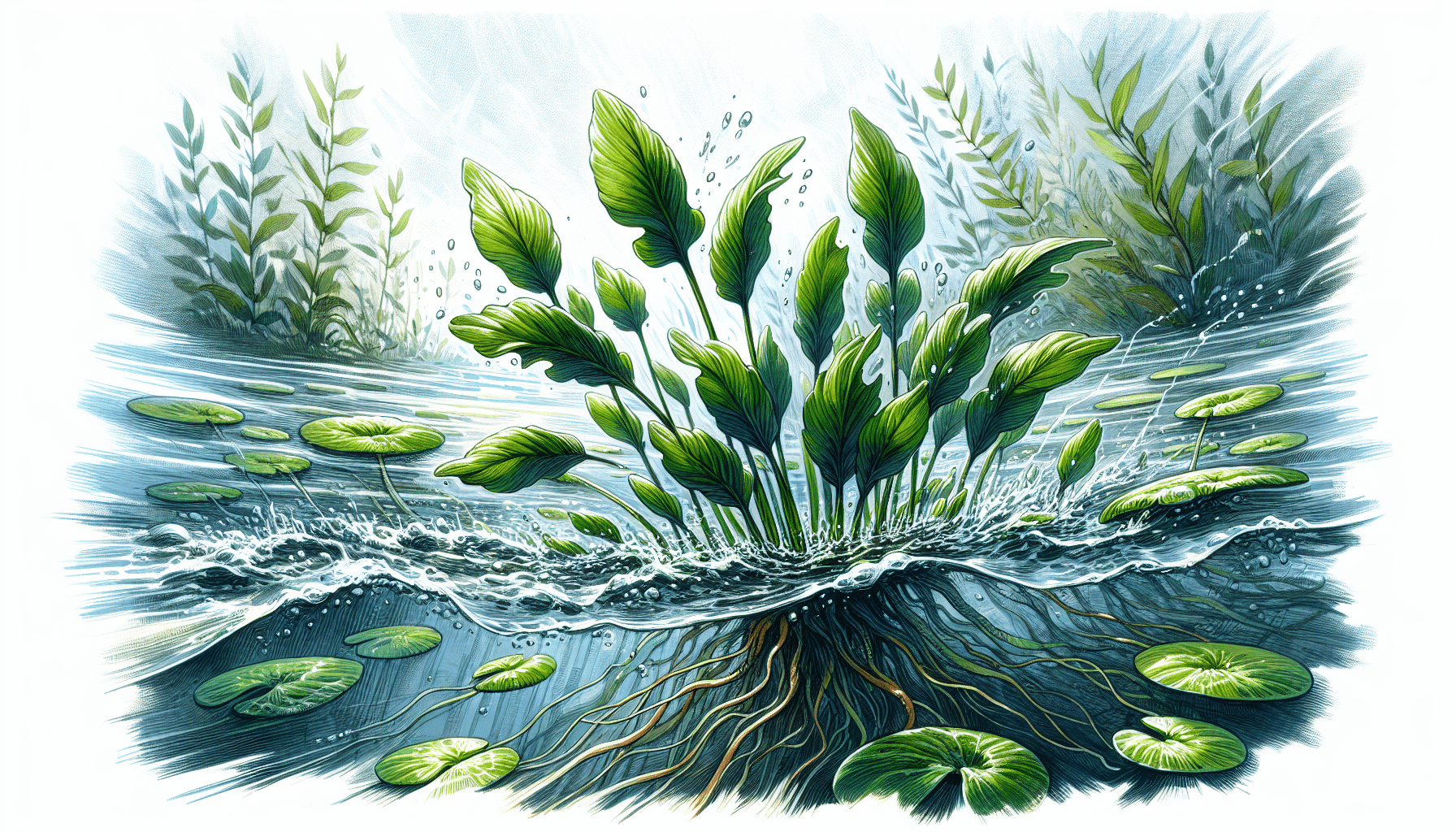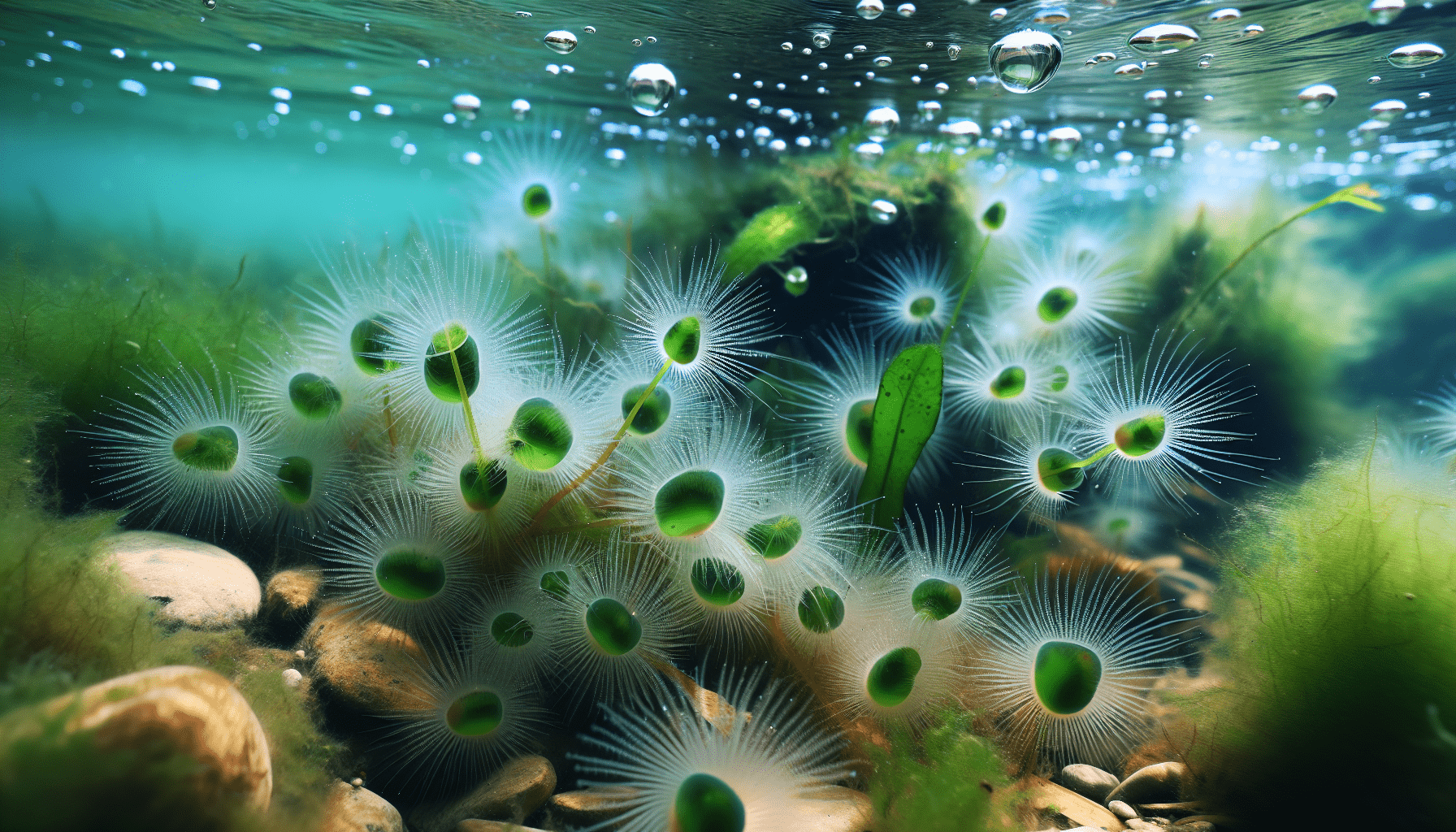You stand on the precipice of unearthing a profound botanical understanding as this article illuminates the identity and peculiarities of the aquatic plant known as Potamogeton Octandrus. As a lesser-known member of the pondweed family, this weed’s function, habitat, and possible economic or ecological implications are topics of notable interest that will be properly examined herein. Set yourself up for an enlightening journey into the waters of aquatic botany as you traverse the fascinating world of the Potamogeton Octandrus.

Definition of Potamogeton Octandrus
Potamogeton Octandrus, commonly known as eight-stamen pondweed, is an aquatic plant species belonging to the Potamogetonaceae family. Identified by its limpid, underwater leaves and the rare case of flowers breaking the water’s surface, this perennial aquatic plant is much noticeable in freshwater habitats.
Botanical Description
Potamogeton Octandrus possesses a unique morphological construction. Its leaves are submerged and possess a thread-like design, tapering at both ends. The length varies between 4-9 cm with a width of approximately 1mm. The plant’s inflorescence emerges sporadically above the water surface, bearing flowers with eight stamens, hence the name.
Scientific Taxonomy
Scientifically, Potamogeton Octandrus is classified under the Plantae kingdom. It belongs to the Tracheophytes division, and subsequently, the Magnoliophyta class. Within this classification, it falls under the order Najadales, under the Potamogetonaceae family.
Common Names
Apart from its scientific name, Potamogeton Octandrus is often referred to with the common name eight-stamen pondweed.
Habitat and Distribution
Eight-stamen pondweed is relatively adaptable, as reflected by its spread across various geographical locations.
Typical Biomes and Climates
A typical aquatic plant, Potamogeton Octandrus is found in freshwater bodies such as rivers, lakes, floodplain ponds, and ditches. Preferably in temperate and boreal regions, it can adapt to a wide array of climates, whether cool or warm.
Geographical Reach
The geographical spread of the Potamogeton Octandrus is quite widespread. In particular, it is commonly sighted in the northern hemisphere, including North America and Eurasia.
Preferred Water Conditions
With a preference for more stagnant or slow-moving water bodies, Potamogeton Octandrus strives best in slightly acidic to neutral pH levels, with a moderate nutrient content.
Life Cycle and Growth Pattern
Understanding the growth pattern and life cycle of Potamogeton Octandrus provides insights into its reproduction and survival strategies.
Seeds and Reproduction
The reproductive strategy of Potamogeton Octandrus primarily involves vegetative reproduction. However, sexual reproduction through pollination is also possible, producing seeds that allow the species to propagate and colonize a wide range of water bodies.
Growth Rate
The growth rate of Potamogeton Octandrus is often rapid, enabling the species to quickly establish itself in suitable habitats. This growth rate is influenced by various factors, including temperature, water quality, and nutrient supply.
Seasonal Changes
The presence of Potamogeton Octandrus is markedly noticeable in the summer, where it burgeons and may form dense underwater meadows. As winter approaches, the plant undergoes senescence where above-ground parts die off, and the plant overwinters as buds (turions) on the pond bottom.

Anatomy and Structure
The anatomy and structure of Potamogeton Octandrus contribute significantly to its survival in varying environmental conditions.
Leaf Structure
The leaf structure of Potamogeton Octandrus is simple yet efficient. Its submerged, thread-like leaves are designed to survive and perform photosynthesis under water, a feature facilitated by its thin structure and reduced cuticle.
Root System
Its root system is composed of numerous slender and fragile rhizomes that anchor the plant in the substrate at the water body bottom. These rhizomes also store nutrients and produce new shoots, aiding in the plant’s vegetative propagation.
Flowering Features
Flowering in Potamogeton Octandrus is less frequent than vegetative reproduction. The plant produces spike inflorescences, which bear small greenish flowers. The flowers contain eight stamens, a characteristic feature attributed to its common name.
Importance in Ecosystem
Despite being an aquatic weed, Potamogeton Octandrus plays some vital roles in aquatic ecosystems.
Role in Aquatic Food Chains
Potamogeton Octandrus serves a dual role in aquatic food chains. Its leaves provide a food source for various aquatic herbivores, including waterfowl and fish. Additionally, it provides a growing place for phytoplankton, which is a principal food source for many small aquatic organisms.
Habitat for Other Species
The submerged meadows of Potamogeton Octandrus offer shelter and breeding ground for various water creatures, including fishes, frogs, and numerous invertebrates. This contributes to the biodiversity of their habitats.
Influence on Water Quality
By absorbing nutrients from the water, Potamogeton Octandrus aids in maintaining water quality. Its thick underwater meadows also minimize erosion by reducing water flow and capturing sediment, thereby promoting water clarity.
Challenges Due to Potamogeton Octandrus
Despite its ecological significance, Potamogeton Octandrus can pose challenges to both biodiversity and human activities.
Threats to Biodiversity
In conditions of unchecked growth, Potamogeton Octandrus can form dense mats that restrict water flow and light penetration, affecting other aquatic species’ growth and survival. This may eventually lead to a reduction in biodiversity of the impacted habitat.
Interference with Human Activity
Dense growth of Potamogeton Octandrus can interfere with human activities such as swimming, boating, and fishing. It can also obstruct water transport and cause issues in water management systems.
Control Methods
Mechanical removal, chemical treatments, and biological control methods are employed to manage the unchecked growth of Potamogeton Octandrus. Each method, however, carries its advantages and drawbacks.
Use in Human Economy
Despite being labelled as a weed, Potamogeton Octandrus carries potential for significant economic uses.
Potential for Biofuel
One of the emerging uses of Potamogeton Octandrus is its potential as a biofuel. In light of increasing demand for renewable energy sources, the fast-growing nature of this plant makes it an ideal candidate for bio-energy production.
Use in Traditional Medicine
Locally, Potamogeton Octandrus finds use in traditional medicine. In certain cultures, it is believed to carry medicinal properties beneficial for various health issues.
Value in Ornamental Ponds and Aquariums
When managed well, Potamogeton Octandrus can contribute to the aesthetics of ornamental ponds and aquariums. Its underwater greenery enriches the overall appeal while offering a natural habitat for aquatic life.
Cultivation and Care
Cultivation of Potamogeton Octandrus may be necessitated by its economic uses, requiring knowledge about optimal growth conditions and care.
Optimal Growth Conditions
Potamogeton Octandrus thrives best in freshwater bodies with stagnant or slow-moving water, moderate nutrient levels, and a slightly acidic to neutral pH.
Pruning and Maintenance
Pruning is essential to keep the growth of Potamogeton Octandrus in check. This is typically done using mechanical methods, involving the removal of excessive plant material.
Disease and Pest Management
Despite being relatively resilient, Potamogeton Octandrus may be affected by diseases and pests, affecting its growth and survival. Therefore, routine checks, use of preventive measures, and occasional treatments are necessary.
Research and Conservation
Being a significant component of freshwater ecosystems, Potamogeton Octandrus is subject to ongoing research and conservation efforts.
Ongoing Scientific Studies
Scientific studies on Potamogeton Octandrus are being conducted to understand its ecology, physiology, and potential economic uses better. These studies provide vital inputs for its management and conservation.
Conservation Status
As an important part of aquatic ecosystems, Potamogeton Octandrus falls under conservation efforts. At present, specific threat levels or conservation status for this species is not described. However, broader aquatic ecosystem protection initiatives would inherently cover this species.
Impact of Climate Change
Climate change can significantly impact the growth and survival of Potamogeton Octandrus, through changes in temperature, precipitation, and water levels. These changes highlight the need for conservation strategies that account for future climate scenarios.
Future Scope and Prospects
The future scope for Potamogeton Octandrus lies in its economic potential, ecological impact, and implications for biodiversity conservation.
Biotechnological Applications
Given its robustness and fast growth, Potamogeton Octandrus could serve as a model organism for studying plant adaptation to submerged conditions, with potential implications for crop improvement through biotechnology.
Potential as an Invasive Species
Potamogeton Octandrus could also become an invasive species under certain conditions, colonizing new habitats and potentially outcompeting native vegetation. This highlights the need for careful management and monitoring, particularly where it is introduced to new regions.
Impact of Human Intervention
Human activities such as pollution, habitat destruction, and climate change can significantly influence the survival and spread of Potamogeton Octandrus. Thus, human intervention should aim to balance economic uses of this species with the need to maintain and protect aquatic biodiversity.